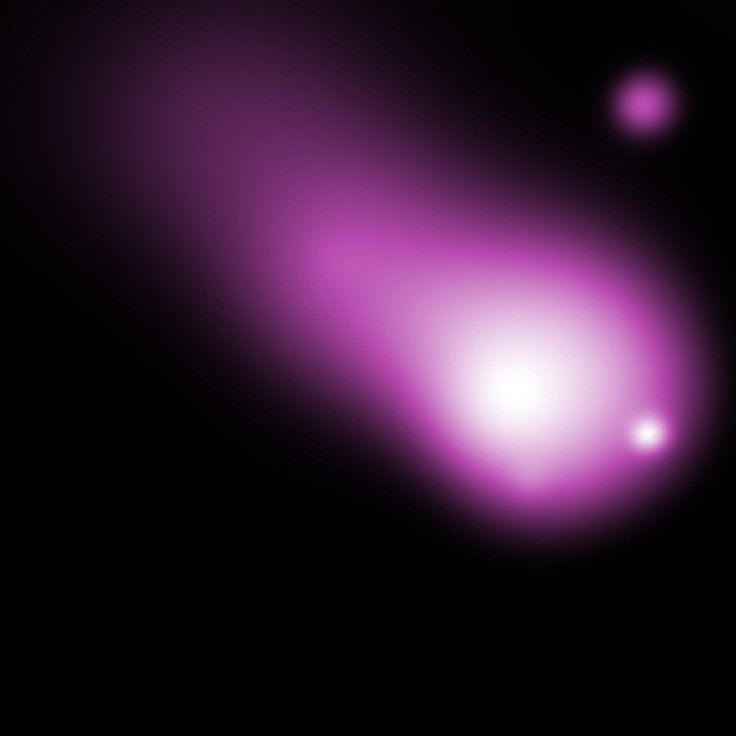Dwarf Galaxy Captured Colliding Into Large Spiral Galaxy

NASA's Chandra X-ray Observatory has captured a peculiar event that scientist may have never seen before -- the collision of a dwarf galaxy with a much more massive spiral galaxy.
The huge cloud of superheated gas is around 6 million degrees Fahrenheit and located about 60 million light year's from Earth, NASA says.
An image combining both X-ray and optical light vividly shows the collision's scene. The Chandra X-ray data, shown in purple, shows the comet shaped appearance of the gas cloud. This is caused by the dwarf galaxy's motion when it crashed into the larger galaxy, called NBC 1232. Blue and white optical data from European Southern Observatory’s Very Large Telescope was then layered with the X-ray image, revealing the spiral galaxy.
Close to the head of the comet-like shape are several extremely bright areas and very strong X-ray emission that, according to NASA, are believed to be the formation of powerful stars, sparked by the collision.

The X-ray's telescope first detected the heat of the collision that -- due to its extreme temperatures -- only glows in X-ray light. Scientist then began to put together what exactly had created the superheated ball of gas.
If the event is confirmed, it will be the first time such a collision has ever been detected only in X-rays, possibly expanding scientists understanding of the way galaxies grow from these types of collisions.
The collision is expected to continue for around 50 million years, allowing the X-rays to be emitted for tens to hundreds of millions of years after that.
© Copyright IBTimes 2025. All rights reserved.





















